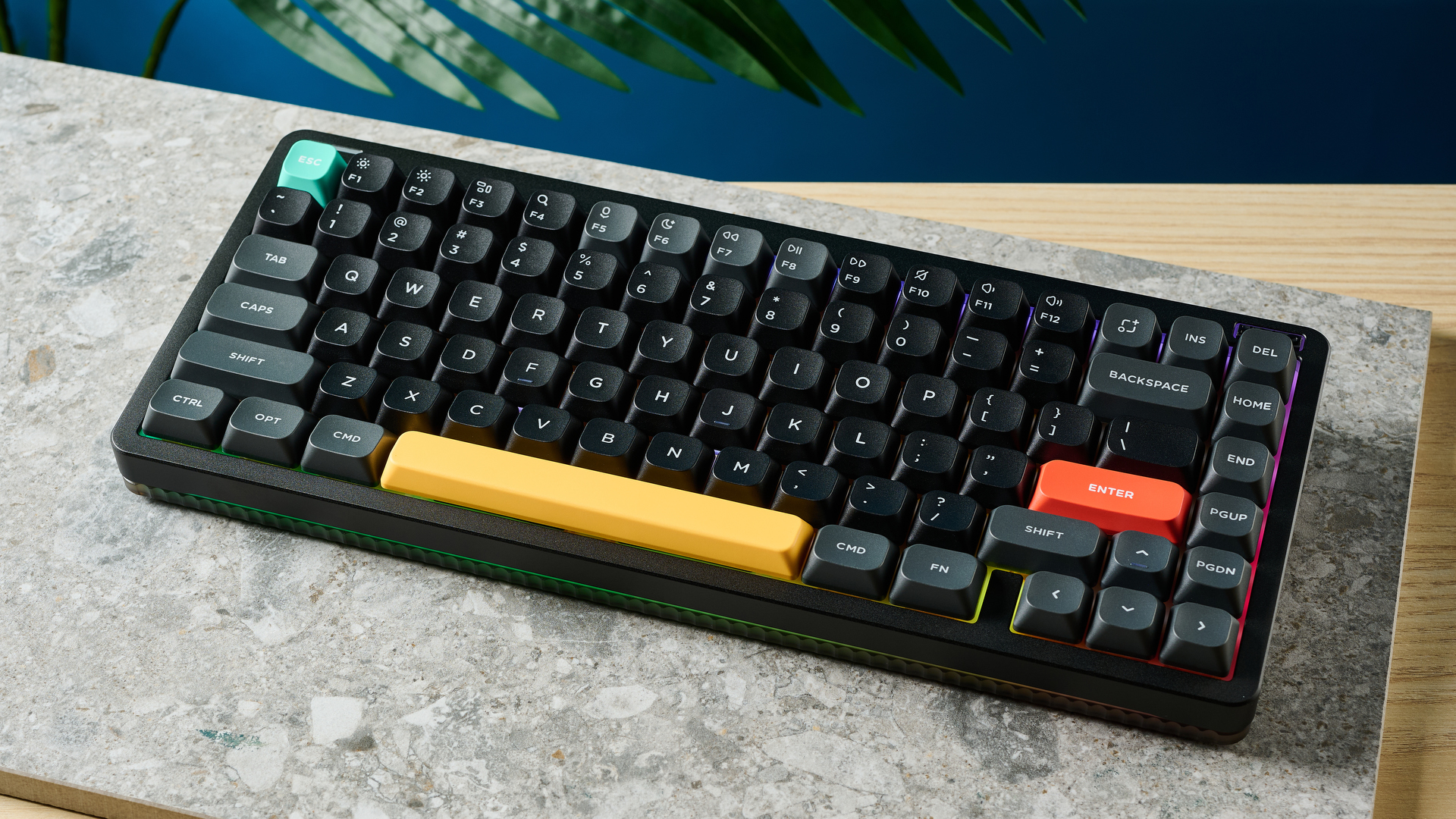
Classics and ancient history nerds (like me — I have a degree in both) jokingly use a unit of measurement called the ‘helen’. Named after Helen of Troy, whose face famously launched one thousand ships, helens are a measurement of beauty: one millihelen is the threshold of beauty required to launch one ship.
If you’re also a custom keyboard nerd (again, like me), I’m sure you’d find it hard to disagree when I say that this keyboard right here ranks pretty high on the helen scale. I’d launch my ship for it, at any rate.
Successor to the original Halo75, the V2 keeps its dashing looks and eponymous halo lighting system, this time packing QMK/VIA firmware, 1,000Hz polling, reshaped keycaps and some serious acoustic attention. The result is a keyboard that performs, types and sounds as good as it looks. Not just a pretty face then.
Before weighing anchor, though, know that this board isn’t perfect, and might not necessarily be the best mechanical keyboard for you. Read on for our full NuPhy Halo75 V2 review.
Editor's note: the NuPhy Halo75 V2 also comes in a 96% layout, the NuPhy Halo96 V2, which is the same aside from size. This review covers both and we'll point out key differences throughout.
NuPhy Halo75/96 V2 review: Cheat sheet
What is it? A custom-style mechanical keyboard, available in either a 75% or 96% layout
How much does it cost? $129 (Halo75 V2); $139 (Halo96 V2)
What’s good? It’s gorgeous to look at, type on and listen to, and fast enough for gaming
What isn’t? The stabilizers could be better, as could switch selection, and I wasn’t a fan of the south-facing LEDs
NuPhy Halo75/96 V2 review: Specs
NuPhy Halo75/96 V2 review: The ups
The NuPhy Halo75 V2 looks and sounds gorgeous, and is a pleasure to type on. It casts a pretty RGB halo onto your desk, is hot swappable, and polls at 1,000Hz over 2.4G for any gamers reading.
Boat floating looks
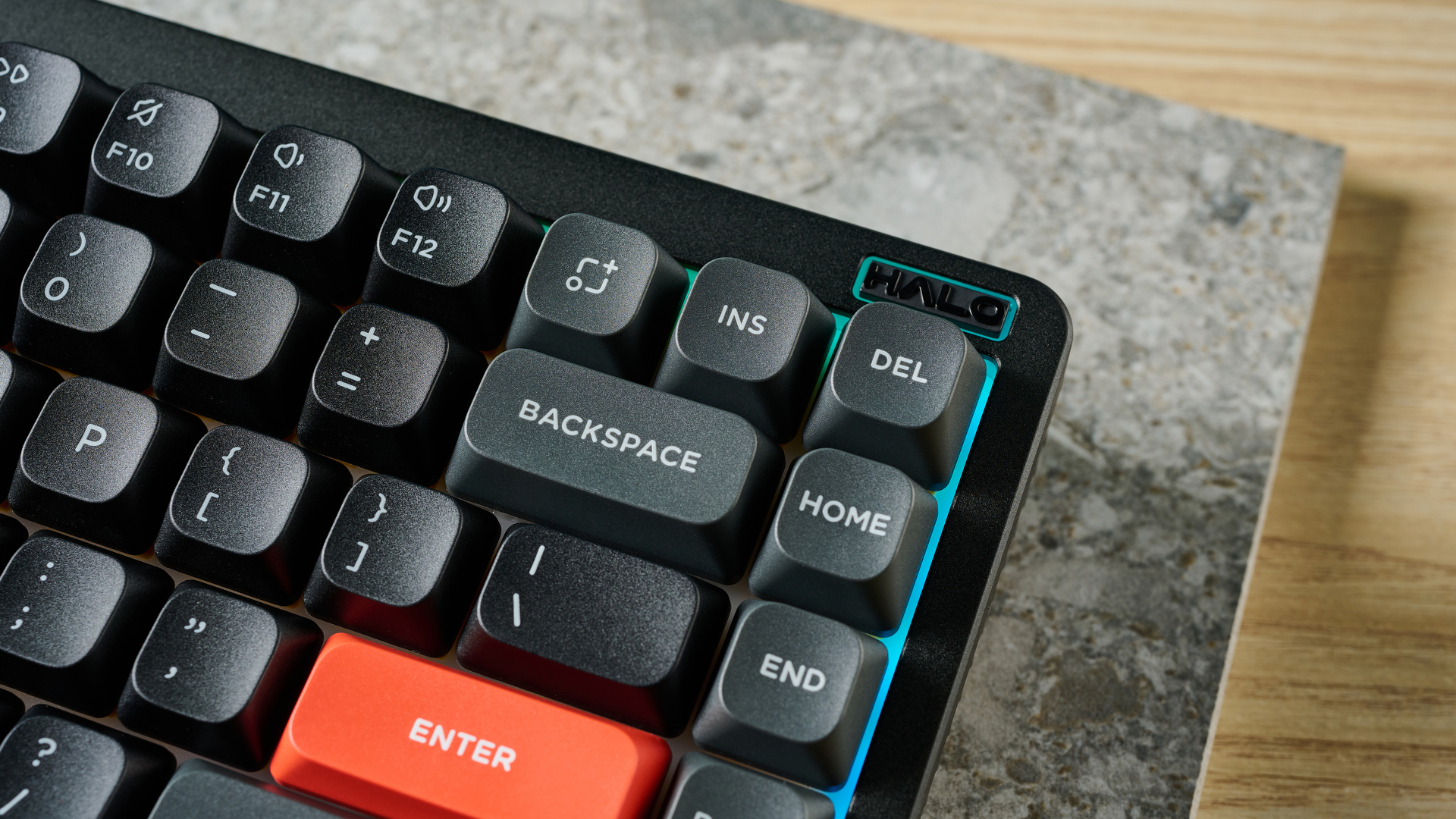
Looks-wise, the Halo75 V2 seriously floats my boat. NuPhy offers the board in a variety of color themes — we tested it in black, and while I prefer the contrasting white central keycaps on the original Halo75, I love the gray outer caps and pops of color on the various keys.
NuPhy offers shine-through “Canopus” keycaps, although you’d have to be in the throes of a psychotic episode to consider them, let alone pay their $49 asking price. Their block font is hideously at odds with the pared-back design philosophy of the keyboard. However, for those with stubborn garish inclinations, NuPhy also offers sets of color matching transparent caps ($15) for major keys (Spacebar, Esc, Enter, etc), which use the same font as the standard keycaps and are a much better fit.
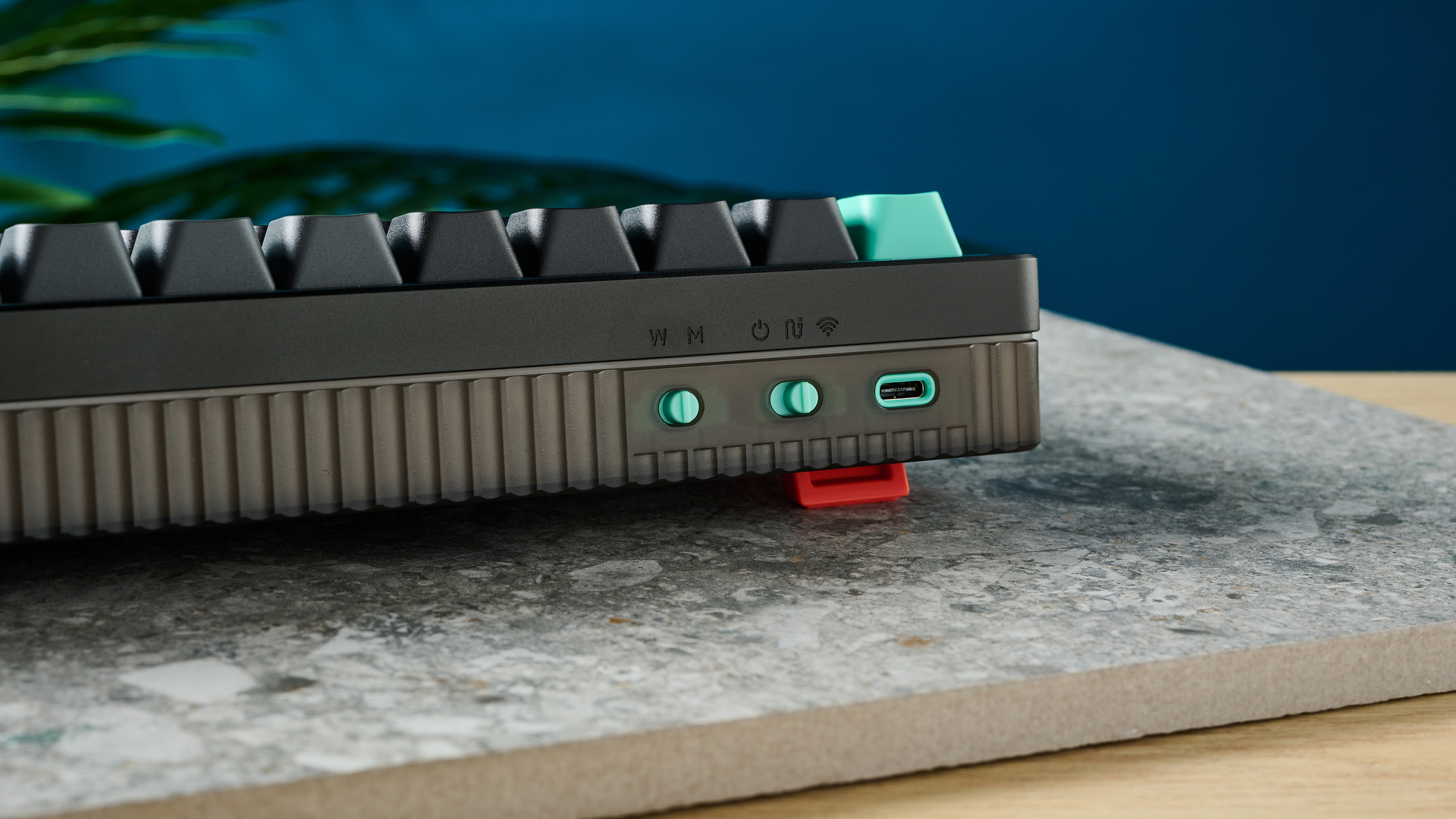
The Halo75 V2 is quite chunky for a 75% board, measuring 1.29 inches in height at its tallest — it’s still compact enough to fit easily into my bag, although I had an easier time with its low profile sibling, the NuPhy Air75 V2.
It’s also on the weighty side at 36 ounces, in large part down to premium construction materials and internal sound dampening. Still, it’s far from Keychron Q6 heavy, and I’m happy to trade a few ounces for build quality and sound this good.
The eponymous halo
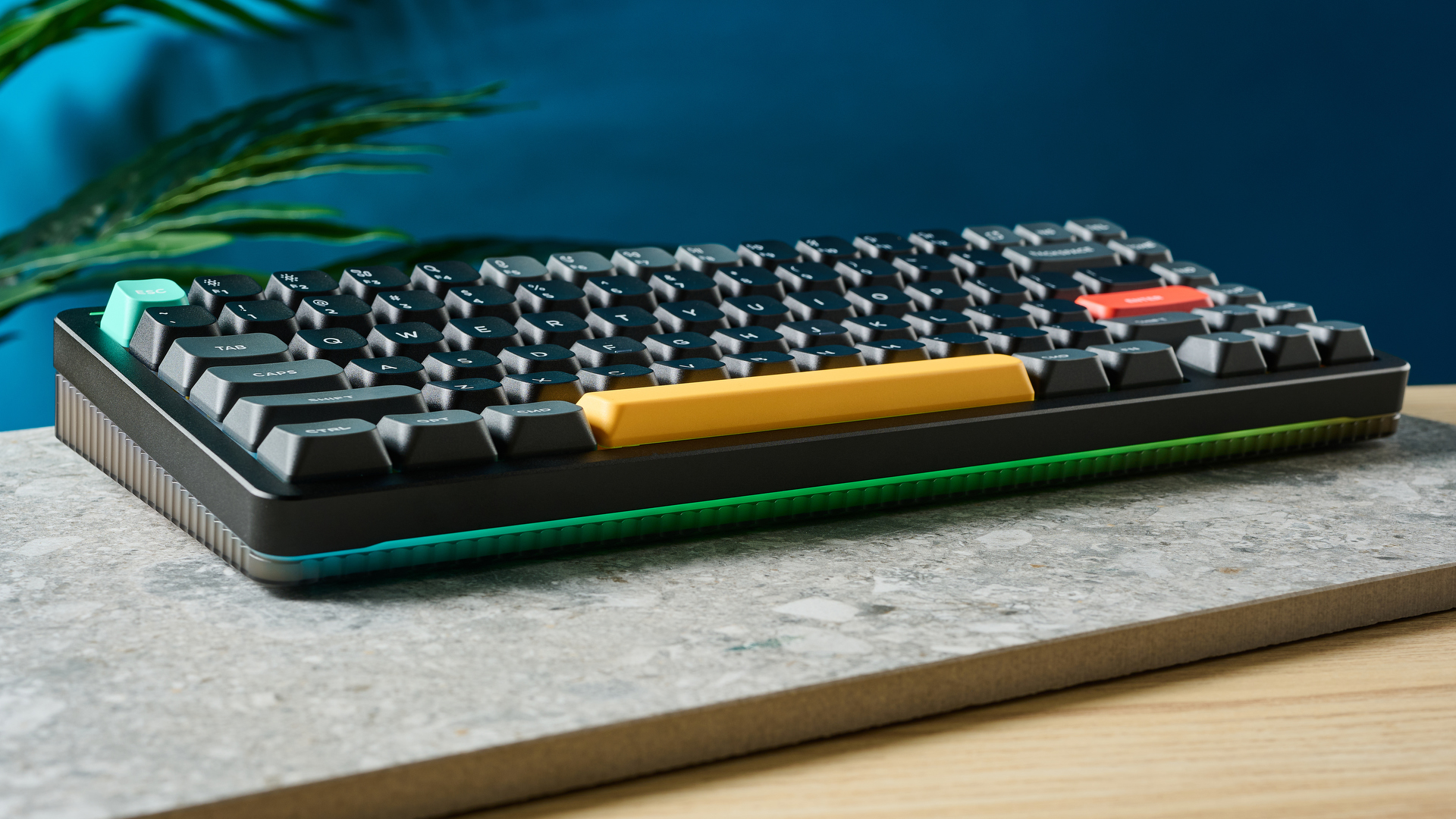
The Halo75 V2’s enviable looks are complemented by the eponymous halo lighting system: a ring of LED lighting that circles around the outer keycaps, and shines through the boards translucent bottom case. The emanating glow, which gets cast onto whatever surface the board is on, looks especially good in low light.
I’m not entirely sold on the under-key RGB, though, which I’ll touch upon in the downs section below.
Sounds as good as it looks
NuPhy’s boards are aimed at people for whom a keyboard’s sound is as important as its styling or performance. While switches are a major factor driving a keyboard’s sound, a lot of it also comes down to the keyboard’s case construction.
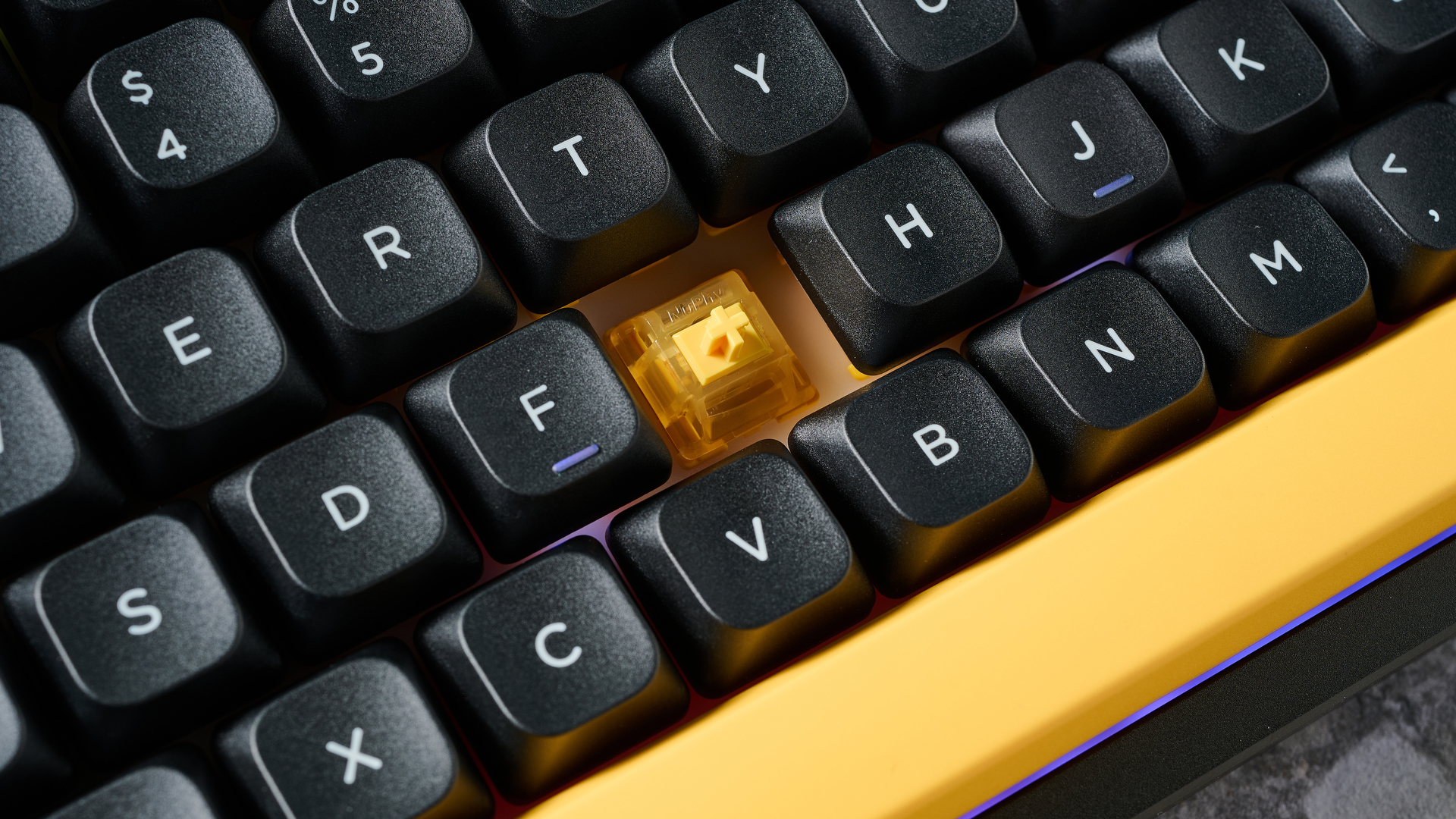
Inside the Halo75 V2’s case are numerous layers of foam and silicone damping, with rubber gasket mounts securing the keyboard’s plate to its PCB. Thanks to all this cushioning, plus heavy doubleshot PBT keycaps, there are no metallic pings, no plasticky rattles, no hollow echoes — just an elegant thock from the NuPhy Lemon switches, above a low, dampened thud as each keycap hits the plate. The sound is clean, refined, and addictive.
NuPhy isn’t offering this board with many switch types, and all are relatively quiet. I’ll discuss this more a little later on, but I’d guess it’s an attempt to limit interference with the deliberate sound of the keyboard — through gaudy, clicky switches, for instance.
Keeping a low profile
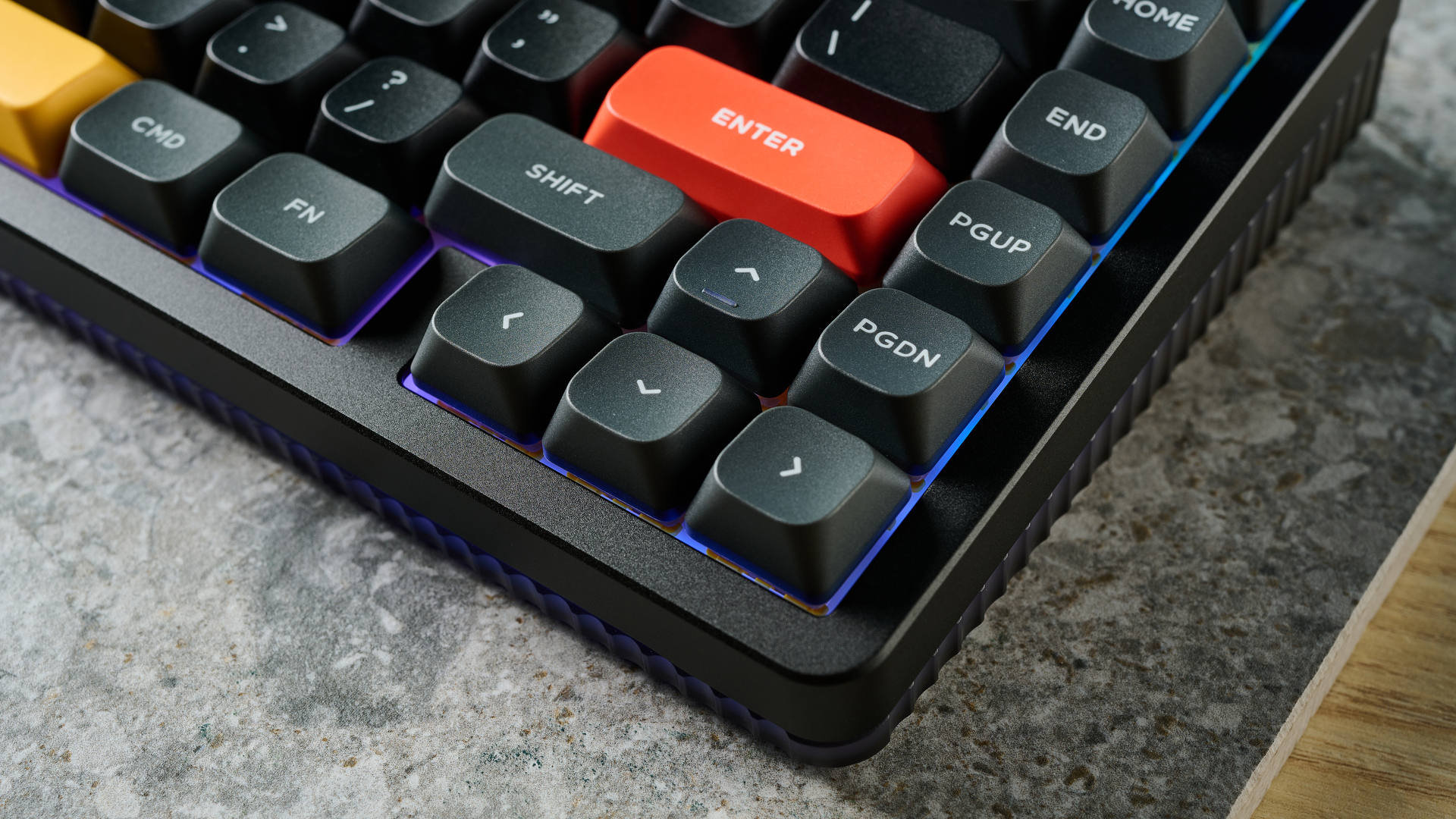
Despite lacking either the inspiration or inclination to write a novel (let alone the patience), if I were to, I’d write mine on this keyboard. Typing on the Halo75 V2 is joyous.
Low profile keycaps are my usual preference when writing — they get in the way less, for more words per minute and fewer mistakes. With the Halo75 V2, NuPhy has redesigned its high-profile SA caps, giving rise to its mSA profile. The lowest mSA caps measure 7mm, so only 1.5mm higher than the low profile nSA keycaps of the NuPhy Air75 V2. These rake upwards to a height of 11.7mm at the board’s extremities — that’s still 3mm lower than the original Halo75’s caps. The effect is a typing experience closer to low profile keycaps, while maintaining much of the size, weight and styling of a higher profile.
I was able to hit 90 words per minute on the Halo75 V2, which isn’t far off my speeds on ultra productivity boards with super low profile keycaps, like the Logitech MX Keys Mini and Apple Magic Keyboard. Interestingly, I’m more accurate on mSA keycaps at speed than I am on the NuPhy Air75 V2’s low profile nSA caps, which speaks to what a great job NuPhy has done with this new profile.
The Halo75 V2 also feels great to type on thanks to the mSA’s comfortable concave bezel and NuPhy x Gateron’s Lemon tactile switches, which offer moderate haptic feedback.
That Hertz
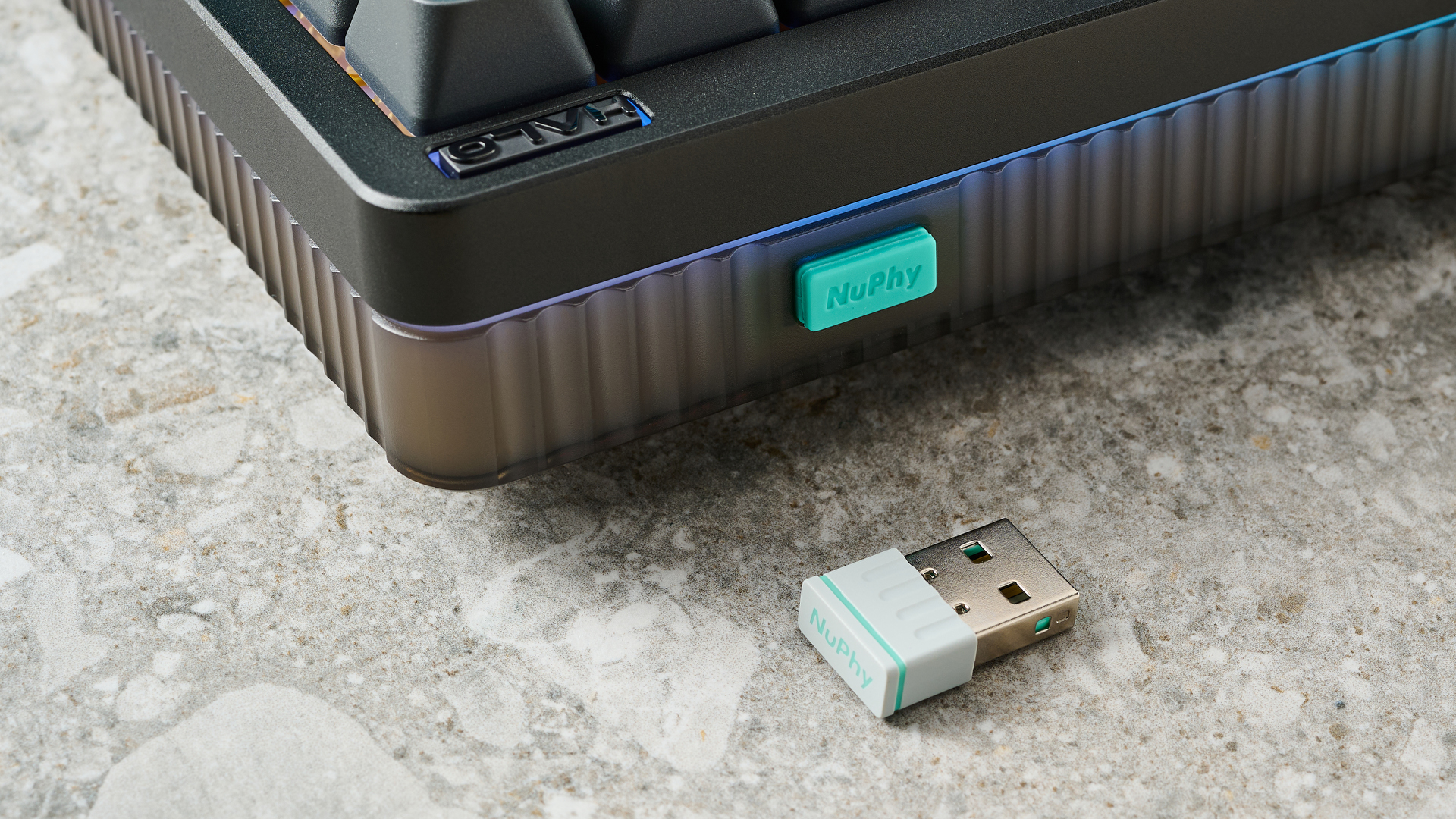
Polling has been boosted from 500Hz in the original model to 1,000Hz in the V2, in either 2.4G or wired modes. That puts the Halo75 V2 on a par with other fast productivity boards like the Keychron V1, and makes the NuPhy a more-than-suitable keyboard for gaming.
Polling over Bluetooth drops to 125Hz, but there’s a handy slot to stash your 2.4G dongle, so you can always keep it with you and switch over whenever the need arises.
It actually works
This is the first NuPhy board I’ve used that actually works — if that comes across as a backhanded compliment, then good, because that’s how it’s meant. Both the NuPhy Air75 V2 and Gem80 experienced firmware issues that caused freezing, lagging and repeated keypresses.
Humorously, I started typing this section on the Air75 V2, to refamiliarize myself with the keyboard for back-to-back type tests. With utterly poetic irony, the Air75 V2 froze on the first line at “actually works” (no, seriously), registering a long press and opening the A-key accents window. Thankfully, the Halo75 V2 has worked flawlessly on macOS and Windows.
Unlike the original Halo75 which used the NuPhy Console, the V2 runs QMK/VIA firmware. This allows you to customize the board through the janky, but fairly comprehensive VIA browser app.
Got the juice
The Halo75 V2 utilizes a 4,000mAh battery. NuPhy states a frankly laughably wide battery estimate of between 9 and 91 hours with all the lights on. So, y’know, it might die now or… in three days.
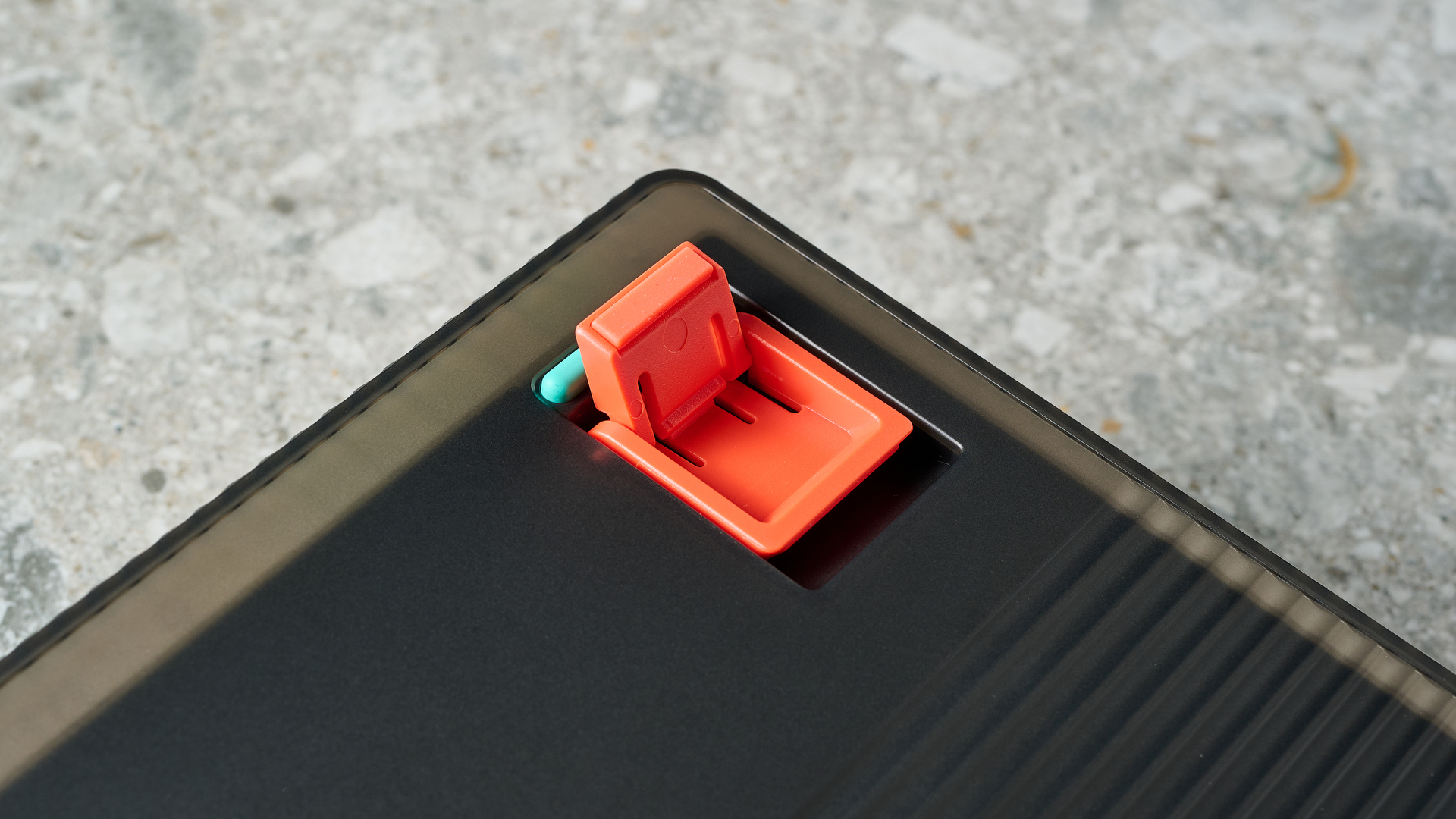
I’ve been using the Halo75 V2 for 5 days now as my primary work keyboard, with a moderately intensive lighting profile, at full brightness and with the halo light running. That’s around 30 hours of constant use, which has drained 33% of the battery. Extrapolating, that puts lights-on battery life at the very top end of NuPhy’s figures.
Without lighting, NuPhy rates the Halo75 V2 for 307 hours, which could realistically net you a month or more of daily usage between charges.
NuPhy Halo75/96 V2 review: The downs
While none are overly concerning, the Halo75 V2 does have a few downsides. Its plastic stabilizers result in a wobbly spacebar, rivals are a little cheaper, switch selection is limited and south-facing RGBs let down the otherwise ambient lighting.
A stab through the heart
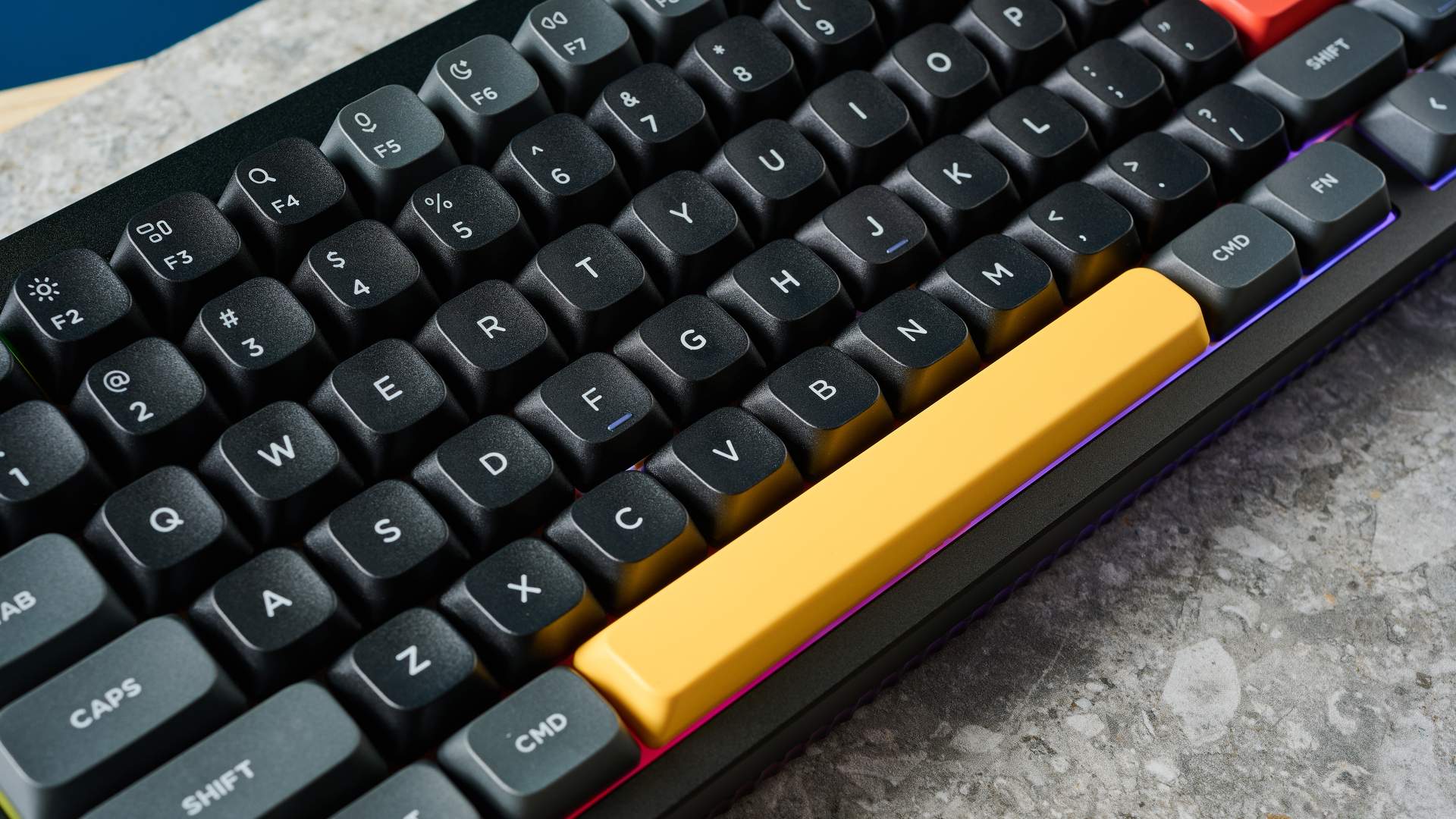
The Halo75 V2’s otherwise brilliant build is let down by its stabilizers (or “stabs”), which sit alongside switches and stabilize large keys. Stabilizers usually allow for some vertical movement, but these ones felt a little too loose. This is particularly noticeable on the spacebar, which wobbles around like a loose tooth.
To ensure I wasn’t overthinking this issue, I put the NuPhy Halo75 V2 side-by-side with the Keychron V6, which features metal screw-in stabs. The Keychron’s spacebar felt much more secure, barely wobbling at all.
Paying a high price
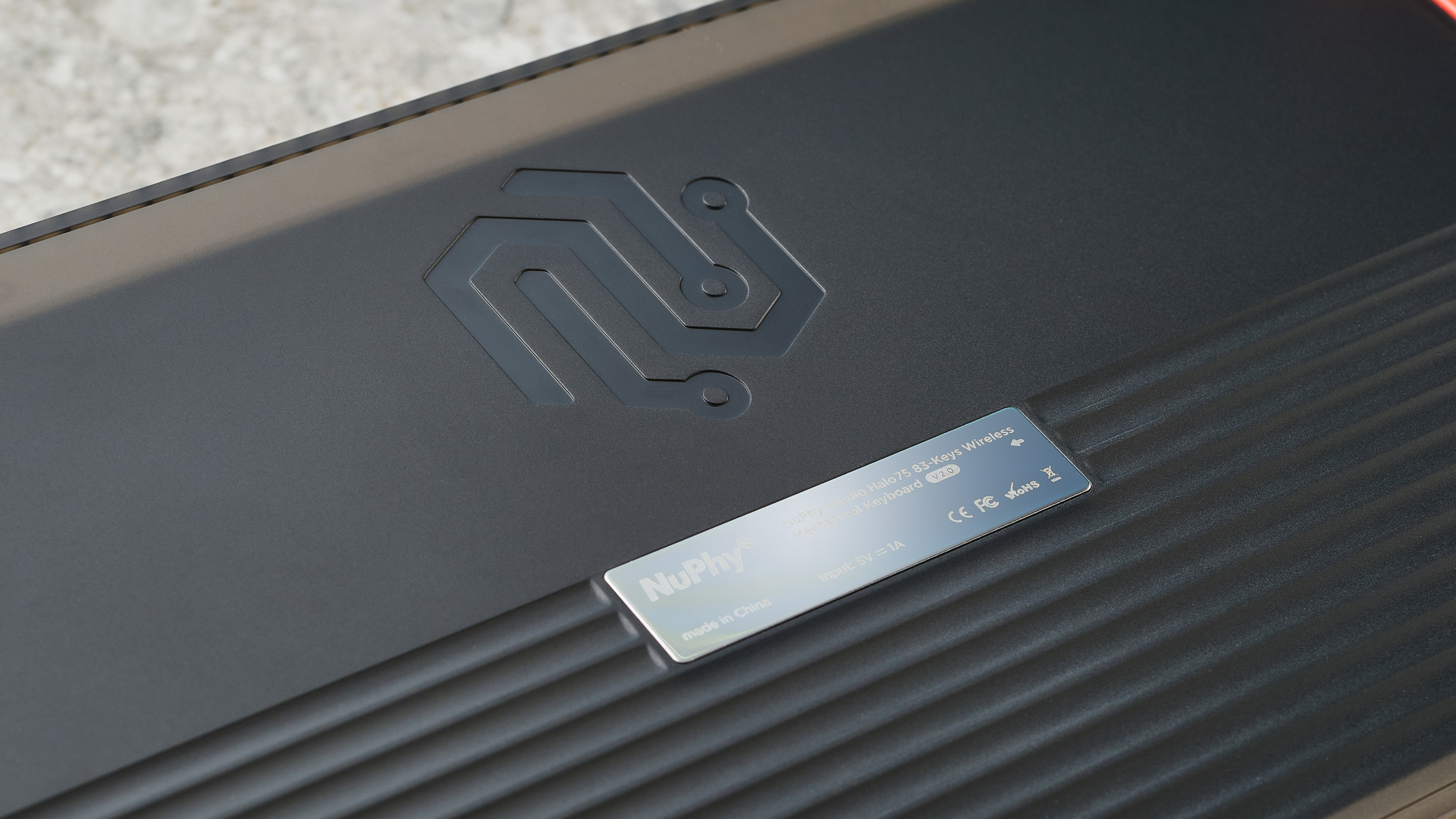
Many of the best keyboards these days, like the Corsair K70 Max and Asus ROG Strix Scope II 96, will set you back upwards of $200. Against that bar, the Halo75 V2 doesn’t seem monstrously overpriced, especially given its premium build.
However, if you’re on a budget and aren’t set on the NuPhy look, there are equally as admirable 75% boards out there for less. We’d recommend the Keychron V1/Max, which offers great looks and build (including screw-in stabs) for under $100.
Chosen for you
The Halo75 V2 switch choices feel a little limited versus the original Halo. NuPhy offers Lemon (tactile), Raspberry (linear) and Mint (linear) Gateron x NuPhy switches, plus silent Gateron Red (linear) switches. Three linear and only one tactile! The original Halo75 offered six, allowing a wider choice without demanding an extra spend.
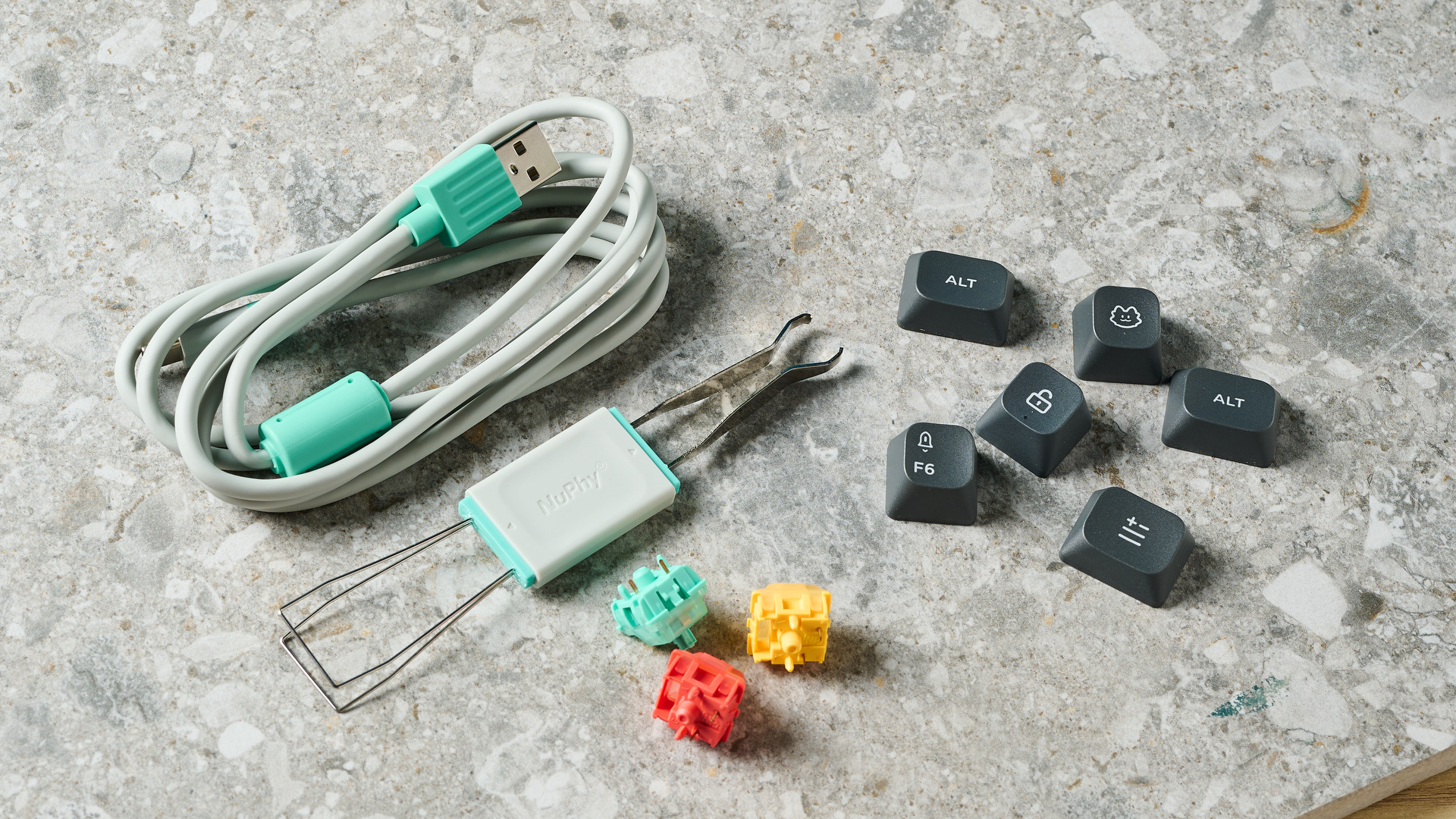
It's worth pointing out that boards like the Keychron V1 Max and Keychron Q3 Max come with even fewer switch choices (three), but I'm comparing here to the previous generation Halo. Besides, those boards come with more than one tactile choice, which I'd have really like to see on the Halo75 V2.
There’s no clicky switch option as standard with the Halo75 V2, although I doubt those would suit the board’s considered acoustics. The keyboard is hot swappable, however, so you can fit different switches down the line.
The South Face
The NuPhy Halo75 V2 features south-facing LEDs — these have their advantages and disadvantages, but so do north-facing RGBs, so I won’t get into the north vs south debate here.
With the Halo75 V2 specifically, the bottom row of keycaps don’t sit low enough to hide the south-facing LEDs, meaning the lower keys of any particular cluster are brighter than the keys above. The sharp LED light clashes with the ambient lighting of the rest of the board, and also shines directly into your eyes, which I find annoying.
NuPhy Halo75/96 V2 review: Verdict

The NuPhy Halo75 V2 is a very easy mechanical keyboard to recommend. If you like custom-style boards, they don’t come much prettier than this, nor as lovely to listen to. It isn’t all style over substance, though: NuPhy deserves extra credit for the design of the mSA profile keycaps, which are excellent to type on, while 1,000Hz polling make the Halo75 V2 a board for the gamers as well as the typists. While there are cheaper keyboards out there, I think the Halo75 V2 justifies its $129 price tag.
All the cons are relatively minor. Limited switch choices are annoying but understandable from an acoustic standpoint. South-facing LEDs cause some lighting anomalies, and you can get slightly better value for money with the Keychron V1. Finally, there’s the wobbly spacebar from the plastic stabilizers, but when I think about it, I’d still date Helen of Troy if she had wobbly teeth (then again, I am British).







